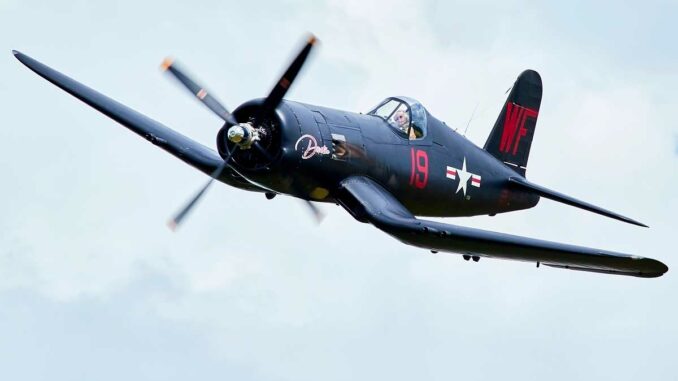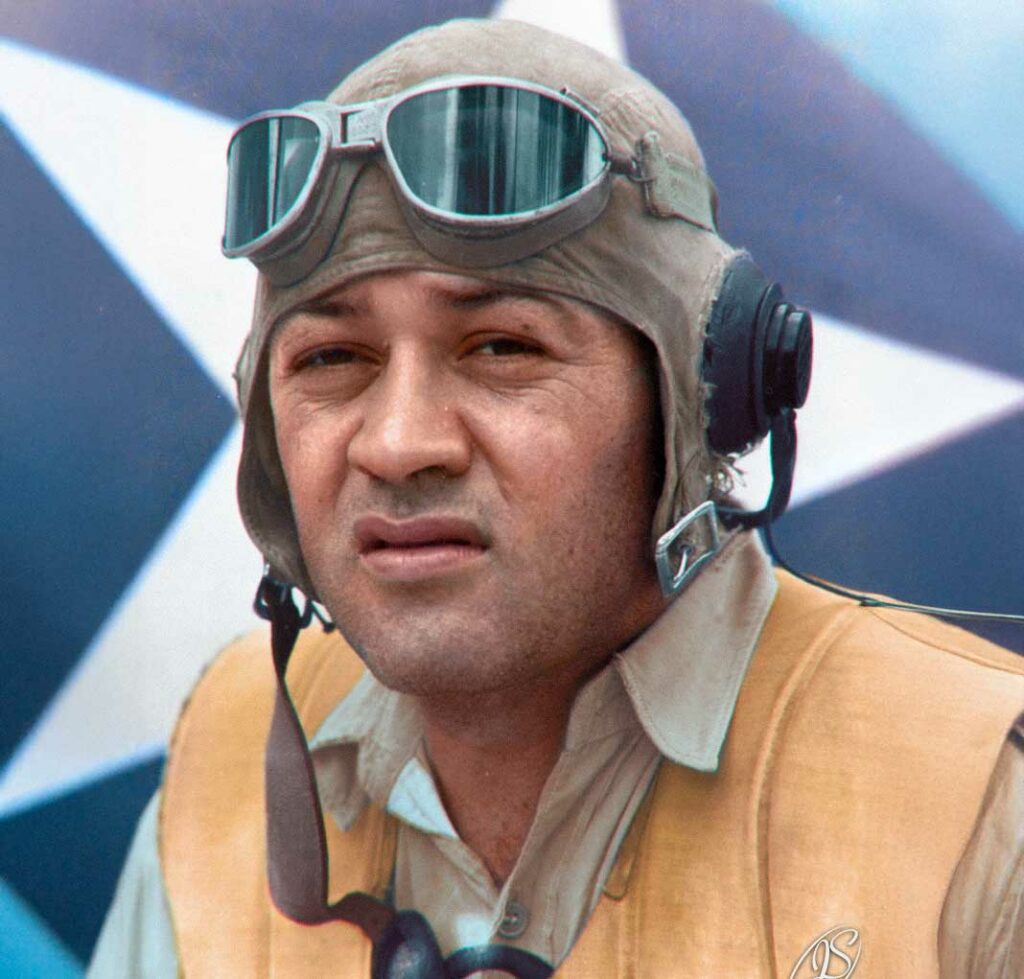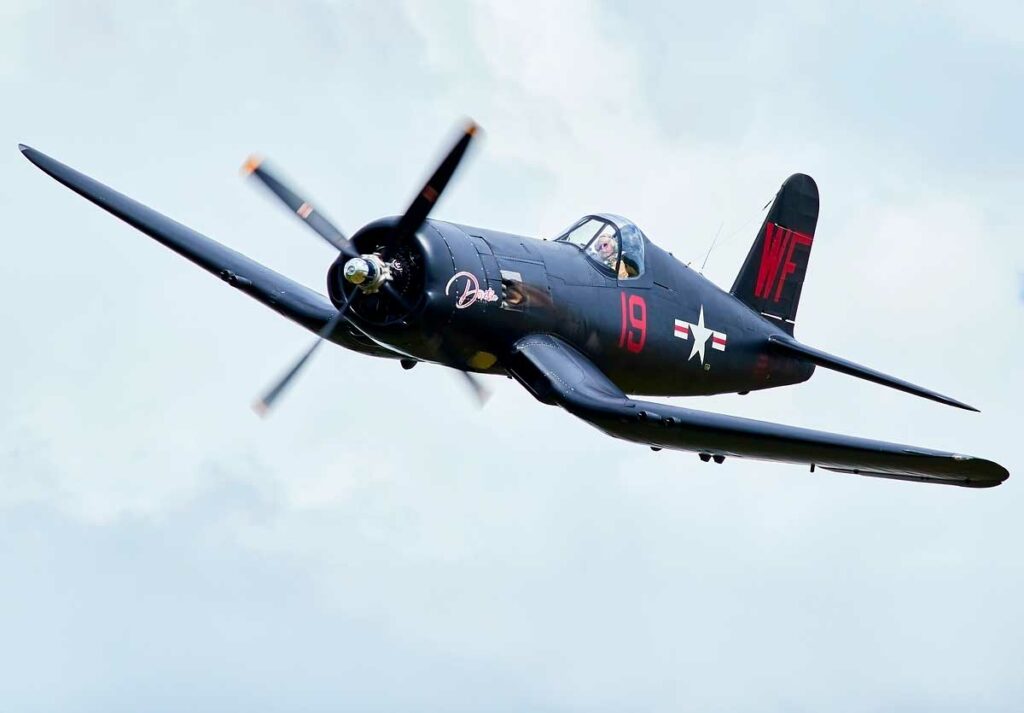
Discover the little-known and surprising history of the Black Sheep, a fighter squadron that became legendary during the Pacific War.
Immortalized on television in the 1970s, the Black Sheep Squadron made its mark on American military history well beyond the small screen. This nickname, given to VMF-214, a squadron of the US Marine Corps, conceals a much more complex reality than fiction suggests. Composed of fighter pilots with atypical profiles—often excluded from standard units—this squadron was assembled by one exceptional man, Gregory “Pappy” Boyington, to fight in the South Pacific during World War II. With their Corsair aircraft and tactical audacity, they fought fierce battles against the Japanese air force. Here are 10 historical and unusual facts to better understand what the Black Sheep really were: an improvised, determined, and highly effective squadron that became both a military and popular icon.
1. An unofficial nickname that became their identity
The name Black Sheep comes from the English expression “black sheep,” used to refer to those considered unruly, marginalized, or atypical. When Pappy Boyington, a veteran of the Flying Tigers in China, took command of a newly formed unit in September 1943, he gathered several pilots who had been rejected by other squadrons. The US Navy considered them unreliable. Yet Boyington saw an opportunity in these varied profiles: to form an over-motivated combat-ready team. The nickname “Black Sheep” started as an internal joke. But the squadron embraced it fully, even placing it on their official insignia: a winged black sheep perched on a missile.
2. An unorthodox and controversial commander
Gregory Boyington, nicknamed “Pappy” because he was 31 (about ten years older than his pilots), was far from a conventional commander. Before rejoining the Marine Corps, he had fought in China as a fighter pilot among the American volunteers known as the Flying Tigers. He already had several confirmed victories against Japanese aircraft. Undisciplined, occasionally alcoholic, but highly skilled in aerial combat, Boyington led from the front. He flew daily missions and developed an offensive tactic: rapid climb, frontal attack, and high-speed disengagement using the Corsair’s power.

3. Only four weeks of express training
VMF-214 was formed in September 1943 at Espiritu Santo, in the New Hebrides Islands. The unit had only four weeks to transition from administrative status to operational combat force. Most pilots were flying the F4U Corsair for the first time. This aircraft, powerful and fast but difficult to land, was not yet authorized for carrier operations. Despite the short preparation time, the Black Sheep were deployed in combat against the Japanese in the Solomon Islands by October.
4. Rudimentary flight conditions
Unlike other US Navy squadrons, the Black Sheep did not operate from aircraft carriers but from dirt airstrips, often muddy, on remote islands like Vella Lavella or Bougainville. Logistical conditions were harsh: few spare parts, rationed fuel, unpredictable weather. The fighter pilots slept in tents, lived on alert schedules, and sometimes flew multiple missions a day in a challenging tropical environment.
5. Remarkable combat effectiveness
Between October 1943 and January 1944, the Black Sheep claimed 94 confirmed aerial victories. This total included 22 credited to Boyington before he was shot down. At their peak, VMF-214 pilots were capable of intercepting and destroying Japanese A6M Zero fighters, thanks to the superior speed and dive performance of their Corsairs. The strategy was simple: surprise the enemy from higher altitude, strike quickly and forcefully, then climb back to safety.
6. A proudly worn and unique insignia
VMF-214 officially adopted the emblem of the winged black sheep. At the time, few units dared to display such a humorous symbol. But the fighter pilots saw it as a way to embrace their reputation and build unit spirit. The insignia quickly became famous in the military press, reinforcing the squadron’s notoriety.
7. Boyington, captured and mistakenly declared dead
On January 3, 1944, Boyington was shot down over Rabaul during combat. The US Navy listed him as missing, presumed dead. In reality, he had been captured by the Japanese and spent 20 months as a prisoner under harsh conditions. Upon his return, he was awarded the Medal of Honor, the highest US military decoration. His absence did not end the legend of the Black Sheep, which continued to grow in public memory.

8. Continued evolution after the war
After 1945, the squadron continued in different forms. It became VMF-214 Jet Squadron, then VMA-214 with the introduction of jet aircraft. The unit later flew the F-4 Phantom, then the AV-8 Harrier, a vertical take-off aircraft. It participated in several modern conflicts, including the Gulf War, and remains active in the US Marine Corps today.
9. A famous TV show, but not very accurate
The television series “Baa Baa Black Sheep,” aired between 1976 and 1978, popularized the name Black Sheep. Led by Robert Conrad as Boyington, the show mixed real events with dramatized fiction. While entertaining, the series often strayed from historical accuracy. Episodes featured caricatured characters and exaggerated situations, with little relation to actual Pacific operations.
10. Customized and easily recognizable Corsairs
The F4U Corsair aircraft used by the Black Sheep were sometimes personalized. Some pilots added names, symbols, or artwork to their aircraft noses, a rare practice within USMC squadrons. With its inverted gull wings and long nose, the Corsair became an iconic element of the unit. Its top speed of 720 km/h, dive resistance, and range of 1,600 km made it a feared adversary.
The Black Sheep Squadron was more than just a TV legend. It was a rare example of an improvised unit, made up of fighter pilots with chaotic paths, that turned into a highly efficient combat force. Its story—marked by boldness, improvisation, and courage—reflects a lesser-known side of the Pacific War. Even today, the name Black Sheep remains tied to a certain idea of operational freedom, field solidarity, and raw effectiveness in the face of adversity.
War Wings Daily is an independant magazine.